
5 Strategies to Increase AOV Ecommerce in 2024
Looking to cut costs on customer acquisition and drive sales? Stores increase AOV ecommerce by growing the average amount each customer spends.
In this article, we will explain 5 ways to increase the average order value for Magento 2 stores.
Key Takeaways
- Amplify AOV with straightforward pricing and bundling tactics.
- Increase cart value using strategic upselling methods.
- Apply free shipping thresholds to drive more sales.
- Use psychological pricing for smarter customer choices.
- Maximize profits with data-driven AOV strategies.
-
5 Strategies to Increase Average Order Value in Ecommerce Stores
-
Ways to Increase Average Order Value with Website Optimization
What is AOV for Magento Ecommerce Stores?
Average Order Value (AOV) is a metric for ecommerce sales. It measures the average amount spent per transaction. Improving AOV can increase profits without the expense of acquiring new customers. It's a cost-effective way to drive revenue by maximizing the value of transactions. The formula used to calculate AOV is:
Total Revenue / Number of Orders = AOV
For example, if your store generates $50,000 from 500 orders, your AOV would be $100.
AOV directly influences profitability in several ways:
- Provides insights into customer purchasing behavior
- Helps assess marketing effectiveness
- Identifies opportunities to increase sales without acquiring new customers
Pricing Strategies for Higher Average Order Value
1. Tiered Pricing Structure
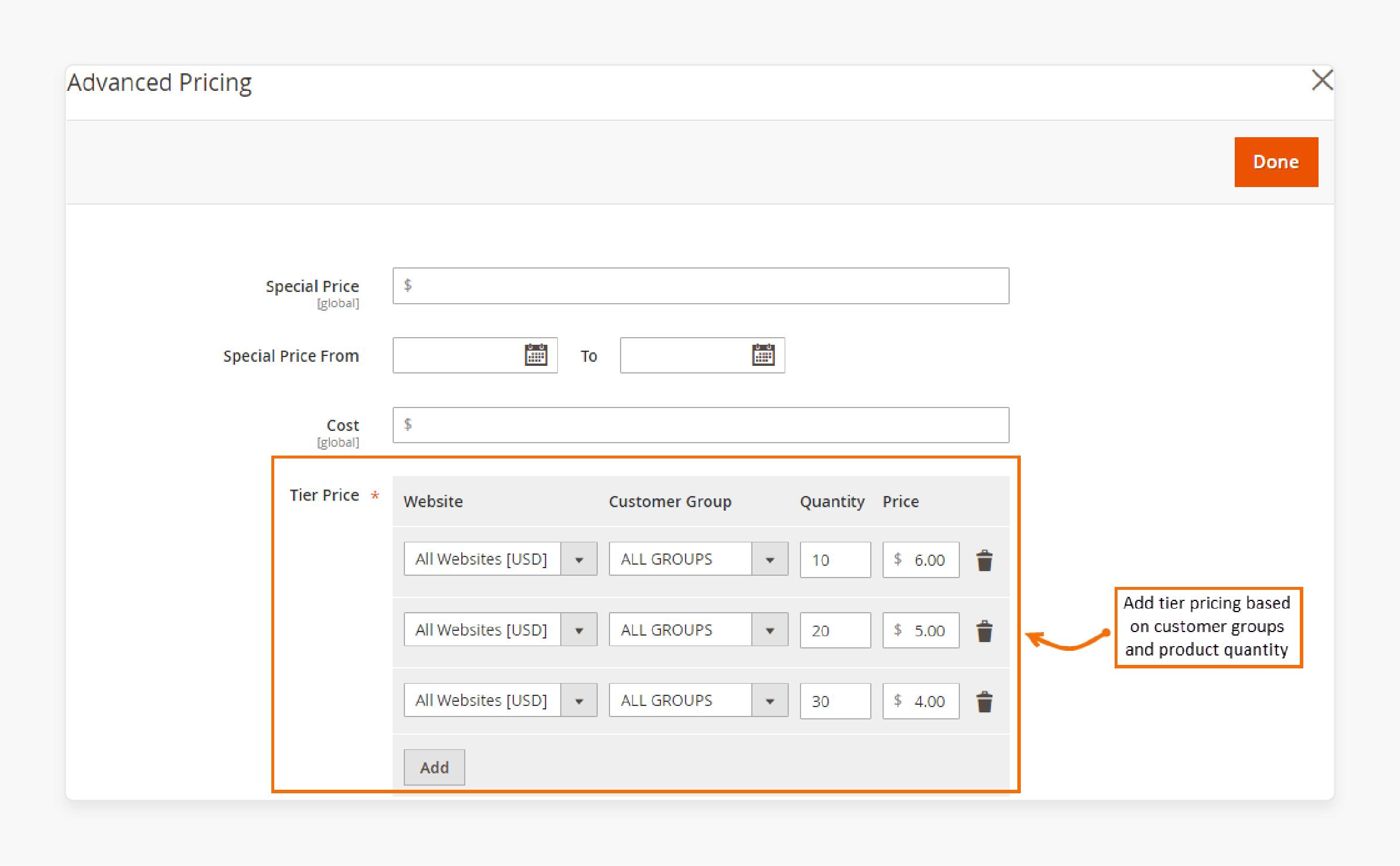
-
The tiered pricing model is a simple yet effective principle. The more customers buy, the less they pay per unit. It's a win-win situation that encourages larger purchases. It is while providing customers with better value.
-
The structure operates on volume-based discounts that automatically apply as purchase quantities increase. For instance, a basic tier might price items at $20 each for the first five units purchased. When customers buy six to ten units, the price drops to $18 per unit. Purchases of eleven or more units further reduce the price to $15 each. This pricing model creates a compelling incentive for customers to buy more.
-
When used correctly, tiered pricing consistently drives higher average order values. Customers naturally gravitate toward the higher tiers to maximize their savings.
2. Psychological Pricing Techniques
-
Price anchoring works by establishing a reference point in the customer's mind. When shoppers encounter a premium item first, it sets a mental benchmark for value. This exposure shapes how they perceive the prices of subsequent products. The premium price serves as an anchor. It makes mid-range options appear more attractive and reasonable by comparison.
-
Each price point must tell a compelling value story. Mid-tier options become attractive when their features and benefits are clearly articulated. The key is to show how these options provide substantial value. It is while being more affordable than premium alternatives. It creates a spot where customers feel they're making an intelligent choice.
-
The cumulative effect of these psychological pricing techniques consistently drives higher AOV. By guiding customers toward mid-range options, businesses can increase revenue per transaction.
3. Bundle Pricing Strategy
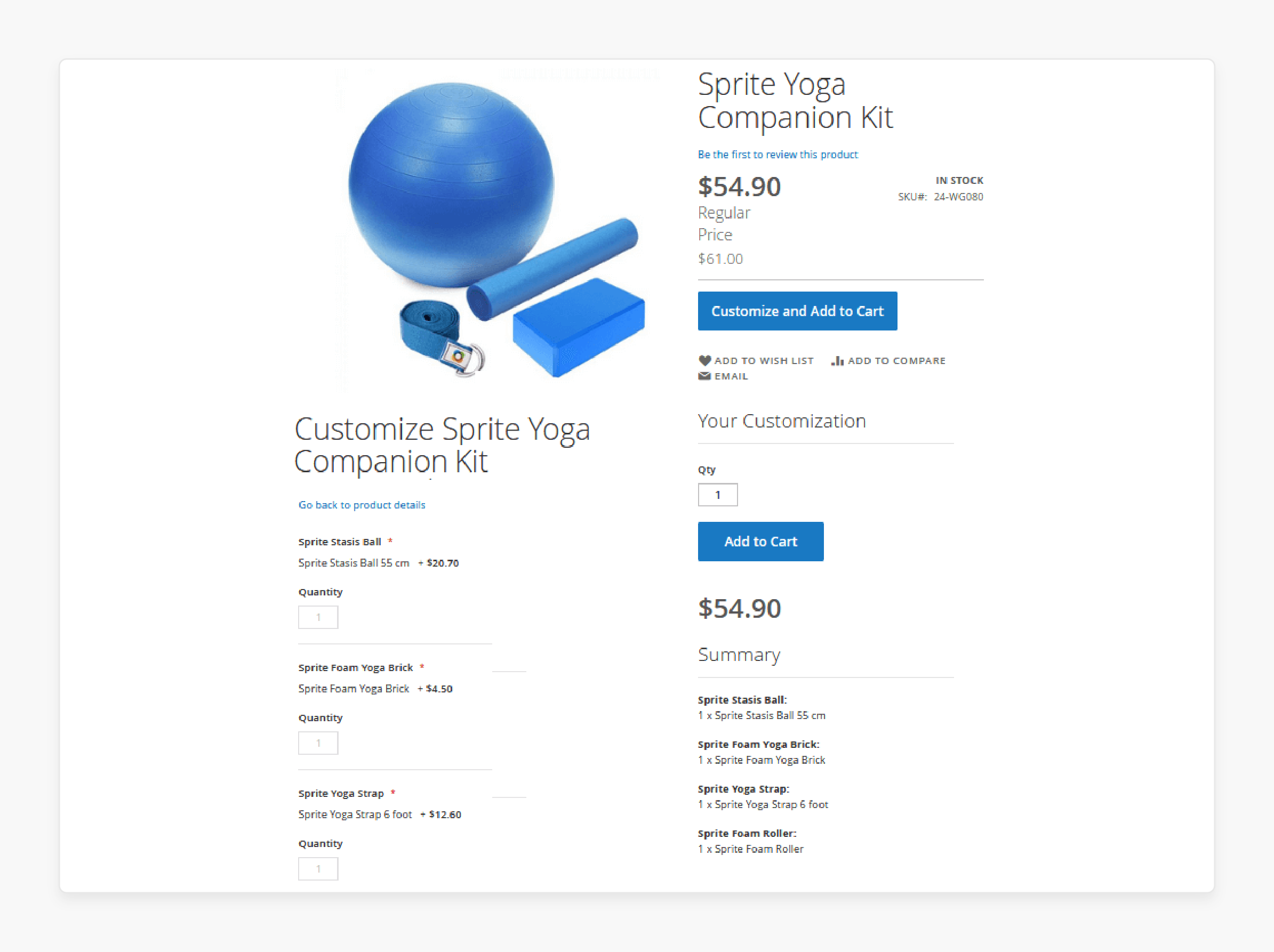
-
Successful bundling starts with thoughtful product selection. Products that naturally complement each other create the most compelling bundles. For example, a skincare bundle might include cleanser, toner, and moisturizer. A gaming bundle could combine a console with popular games and accessories. These pairings make the bundle more attractive and increase your average order value.
-
The discount offered in bundle pricing must be significant enough to motivate purchase. It should not be so deep that it erodes profitability. It typically lies between 10-15% of the total individual prices.
-
Bundle prices should be prominently displayed alongside the total cost of individual items. This direct comparison helps customers quickly understand their savings. The value proposition becomes immediately clear.
4. Free Shipping Thresholds
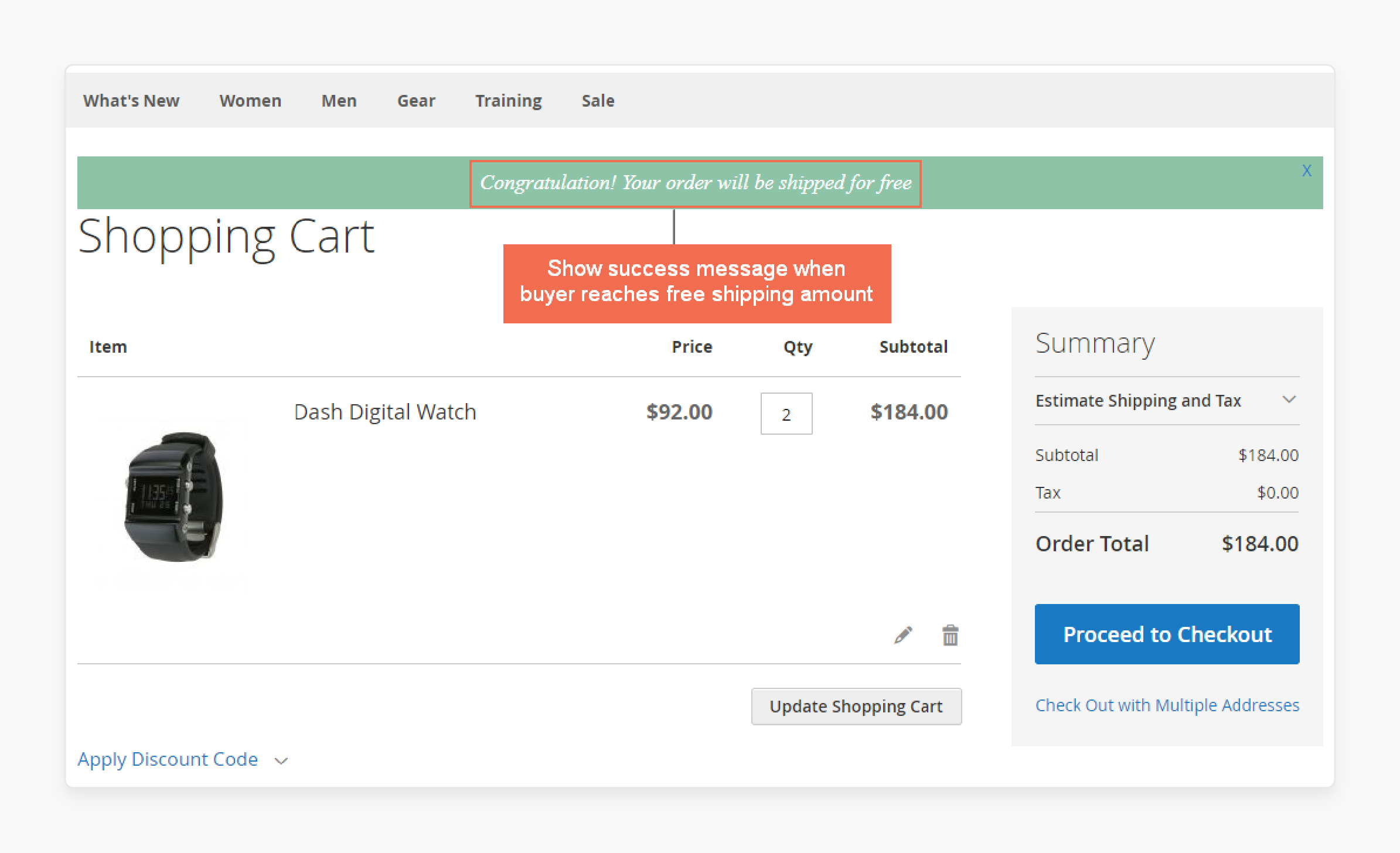
-
This incentive encourages customers to add more items to their cart to reach the target. The psychology behind this approach is remarkably effective. Customers often prefer to purchase additional products rather than pay for shipping.
-
The key to successful usage lies in setting a suitable threshold amount. Placing the threshold 25-30% above your current AOV creates an achievable target. It encourages customers to spend more. It is while ensuring the additional revenue covers shipping costs and maintains profitability.
-
Showing customers how close they are to reaching the free shipping creates motivation. These progress act as gentle reminders that encourage additional purchases. The strategy works because it taps into fundamental consumer behavior.
5. Value Added Pricing
-
Value added pricing is about customers who will pay more when they understand the value.
-
Every product has unique features that set it apart from competitors. Value-added pricing emphasizes these distinguishing characteristics through detailed descriptions. The focus remains on how these features solve specific customer problems. This approach helps justify higher price points and increases perceived value.
-
Quality becomes a central element in value-added pricing strategy. Superior materials and manufacturing processes are communicated to customers. Explanations of quality differences help customers understand why specific products have premium prices.
5 Strategies to Increase Average Order Value in Ecommerce Stores
1. Strategic Upselling and Cross-Selling
-
Upselling involves recommending premium versions of the product a customer is considering. This technique works best when it offers clear additional benefits or features. The price difference should be at most 30% of the price point. This threshold helps maintain purchase likelihood. It does this while maximizing the potential to increase your AOV.
-
Cross-selling focuses on suggesting complementary products that enhance the primary purchase. These recommendations should feel natural and logical to the customer. For example, I could indicate a case in which someone buys a smartphone. The success of cross-selling relies on the relevance and timing of these suggestions.
-
The presentation of upsell and cross-sell offers requires careful consideration. These suggestions should appear at strategic points in the customer journey. Standard placement includes the product page, shopping cart, and checkout process. You should maintain a balance between being helpful and avoiding overwhelming the customer.
-
Keeping additional recommendations within a reasonable price range maintains momentum. This psychological pricing approach helps customers justify the extra expense. It is part of their planned purchase rather than viewed as a separate decision.
2. Loyalty Programs & Customer Retention
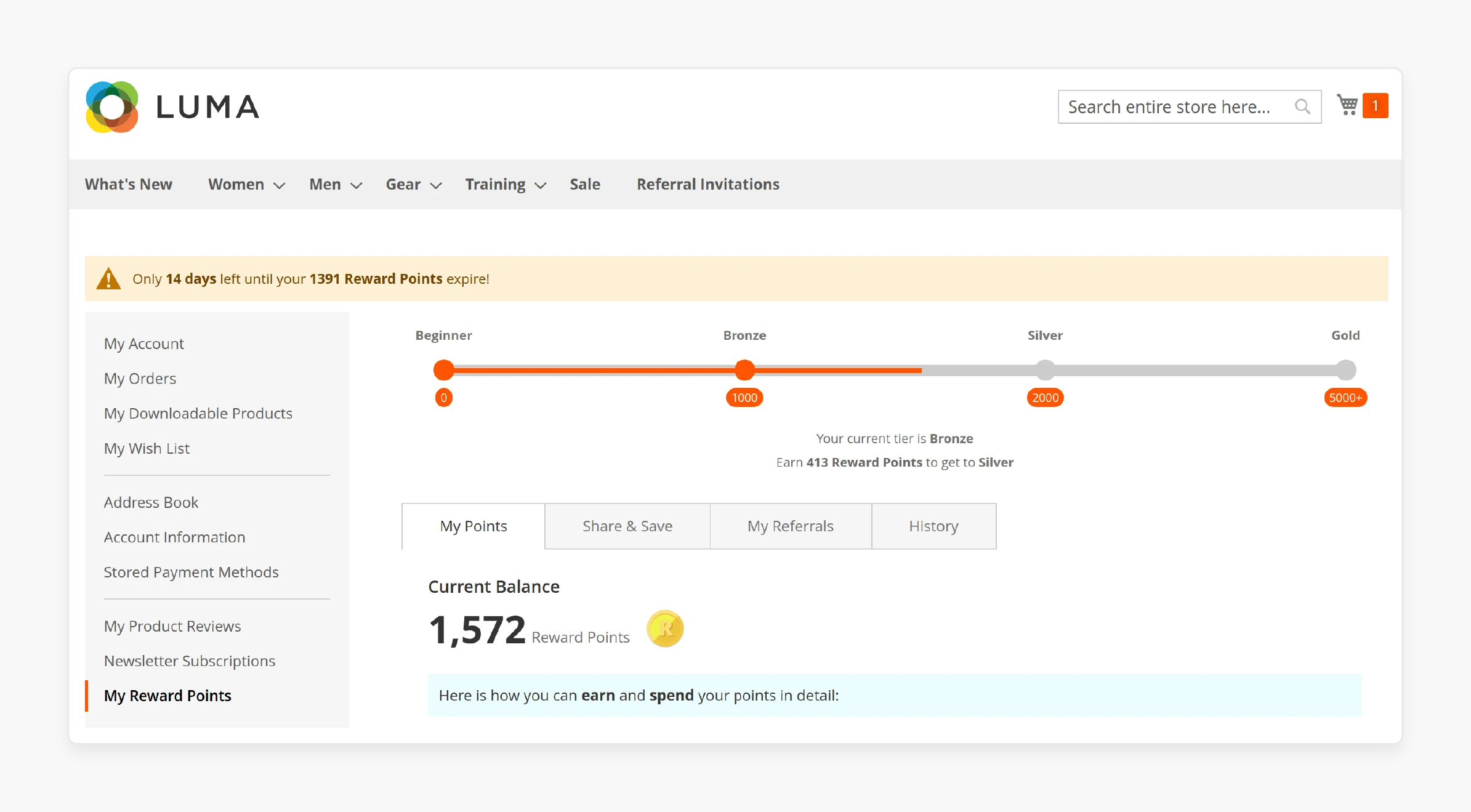
-
Loyal customers demonstrate different purchasing behaviors compared to new buyers. Research confirms that repeat customers spend an average of 67% more per transaction. This increased spending stems from trust in products and their benefits.
-
Effective loyalty programs use tiered structures that encourage progressively larger purchases. Each tier offers valuable benefits, creating natural motivation for customers to spend more.
-
Point accumulation systems provide a straightforward way to reward customer spending. Customers earn points based on purchase values. They can later redeem these points for rewards. This system creates a direct link between spending amounts and benefits received.
-
Special privileges for loyalty program members create additional value beyond points or discounts. These benefits include early access to sales, products, or customer lifetime value.
3. Personalized Recommendations
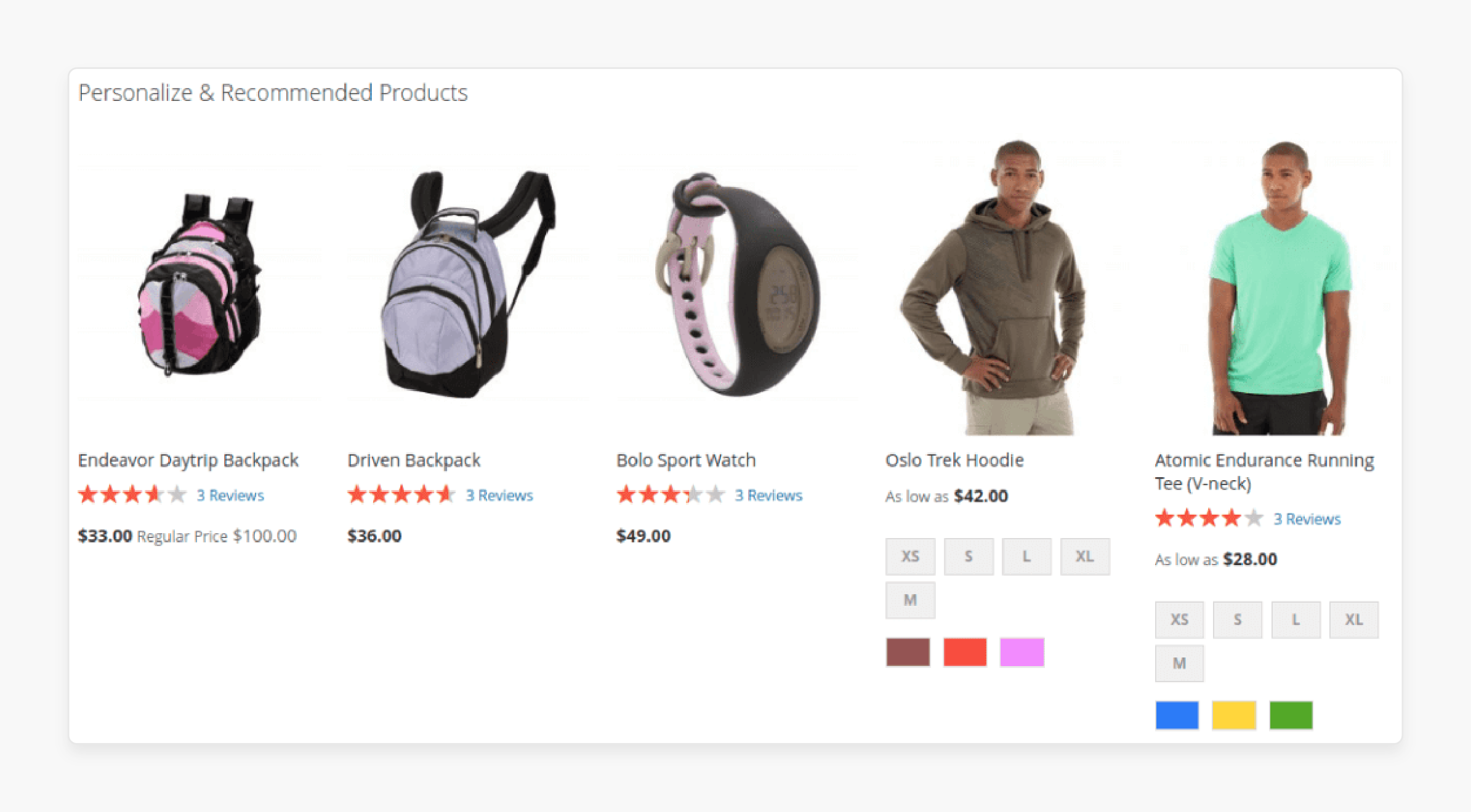
-
AI algorithms analyze vast amounts of customer data to identify patterns and preferences. These systems continuously learn from customer interactions. It improves recommendation accuracy over time and conversion rates.
-
Deep analysis of customer behavior forms the foundation of effective personalization. Purchase history reveals clear patterns in customer preferences and buying habits. Browsing behavior provides insights into interests and potential future purchases. This information creates a customer profile for recommendations.
-
Modern recommendation systems track customer behavior during shopping sessions. This immediate analysis allows for dynamic adjustments to product suggestions. The system responds to current browsing patterns and cart contents.
-
Personalized recommendations often incorporate social proof elements. Showing how similar customers have paired products increases confidence in suggestions. This approach leverages the power of crowd wisdom to influence purchase decisions.
4. Limited Time Offers and Urgency
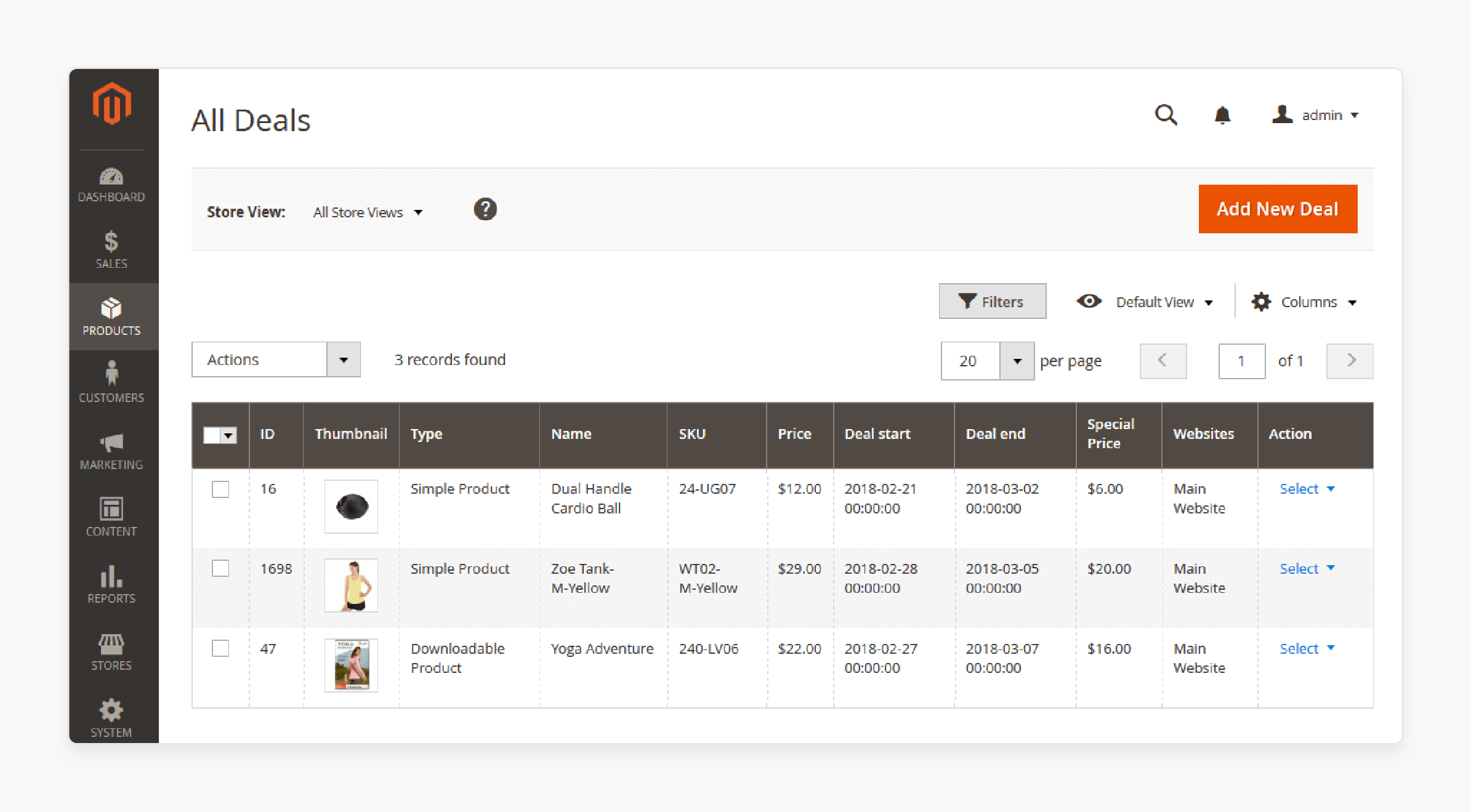
-
Time limitations trigger emotional responses in shoppers. The fear of missing out on a good deal drives immediate action. This psychological trigger often leads customers to make larger purchases. The time constraint reduces comparison shopping and decision-making processes.
-
Flash sales create intense bursts of shopping activity through minimal time windows. These brief sales periods last anywhere from a few hours to a single day. The short duration creates excitement and encourages immediate purchases. Customers often buy more during flash sales to maximize the opportunity.
-
Combining time limitations with quantity restrictions amplifies urgency. Limited stock notifications create additional pressure to act quickly. This dual constraint of time and quantity often leads to faster and larger purchases.
5. Post Purchase Upselling
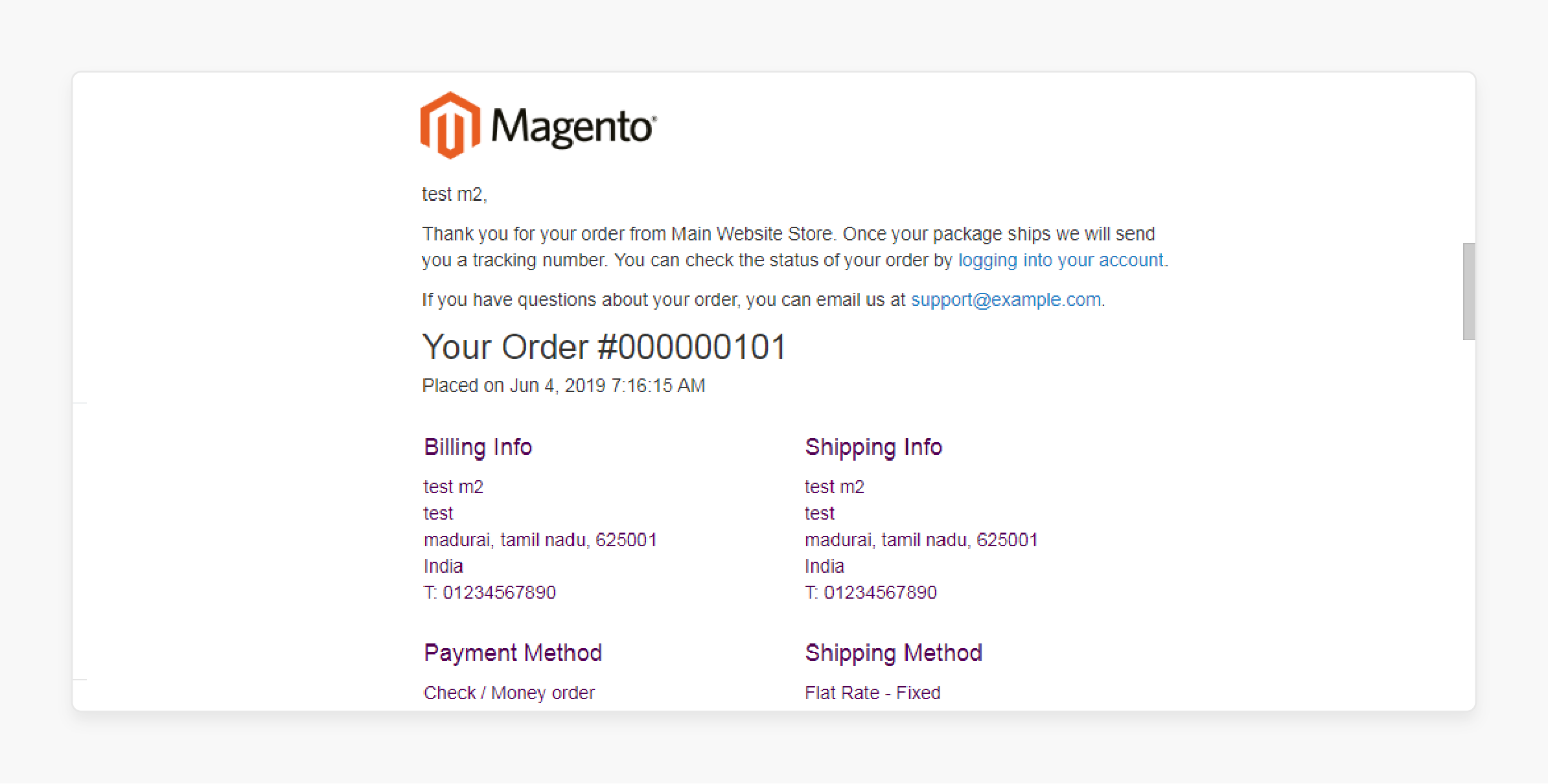
-
The simplicity of one-click upsells plays an essential role in their success. Customers can add recommended items without repeating the checkout process. This frictionless experience maintains purchasing momentum. The ease of transaction significantly increases conversion rates for additional offers.
-
The order confirmation or thank you page serves as a tag for strategic upsells. This page captures the customer's full attention after purchase completion. Strategic placement of relevant offers on this page yields high engagement rates.
-
Post-purchase offers typically succeed best at lower price points than the original purchase. These smaller additional purchases feel more manageable to customers. The psychological barrier to accepting these offers remains low. The cumulative effect still significantly impacts the average order value.
Ways to Increase Average Order Value with Website Optimization
| Optimization Element | Impact on AOV | Strategy |
|---|---|---|
| Page Design & Layout | Increases conversion rate by 35% | - Use appealing colors and graphics - Optimize layout for easy navigation - Ensure high-quality product images |
| Loading Speed | Direct correlation with conversion rates | - Optimize rich content loading - Minimize page load times - Ensure mobile responsiveness |
| Product Page Elements | Builds trust and encourages larger purchases | - Detailed product descriptions - Customer reviews - High-quality images - Clear pricing information |
| Premium Product Highlighting | Guides customers toward higher-value purchases | - Use visual cues like "Most Popular" labels - Strategic color differences - Prominent placement of premium options |
| Social Proof Integration | Increases purchase confidence | - Display customer reviews - Show trust badges - Feature media mentions - Display certifications |
| Checkout Experience | Reduces abandonment, increases completion | - Smoothen the process - Clear shipping thresholds - Easy cart modifications |
| Cross-selling Display | Encourages additional purchases | - Related product recommendations - Complementary item suggestions - Bundle offerings |
| Visual Hierarchy | Directs attention to high-value items | - Strategic product placement - Effective use of white space - Clear call-to-action buttons |
| Promotional Elements | Creates urgency and encourages larger purchases | - Limited-time offer displays - Countdown timers - Special deal highlighting |
3 Best Ways to Increase AOV Using Data Analytics
1. Real-Time Optimization
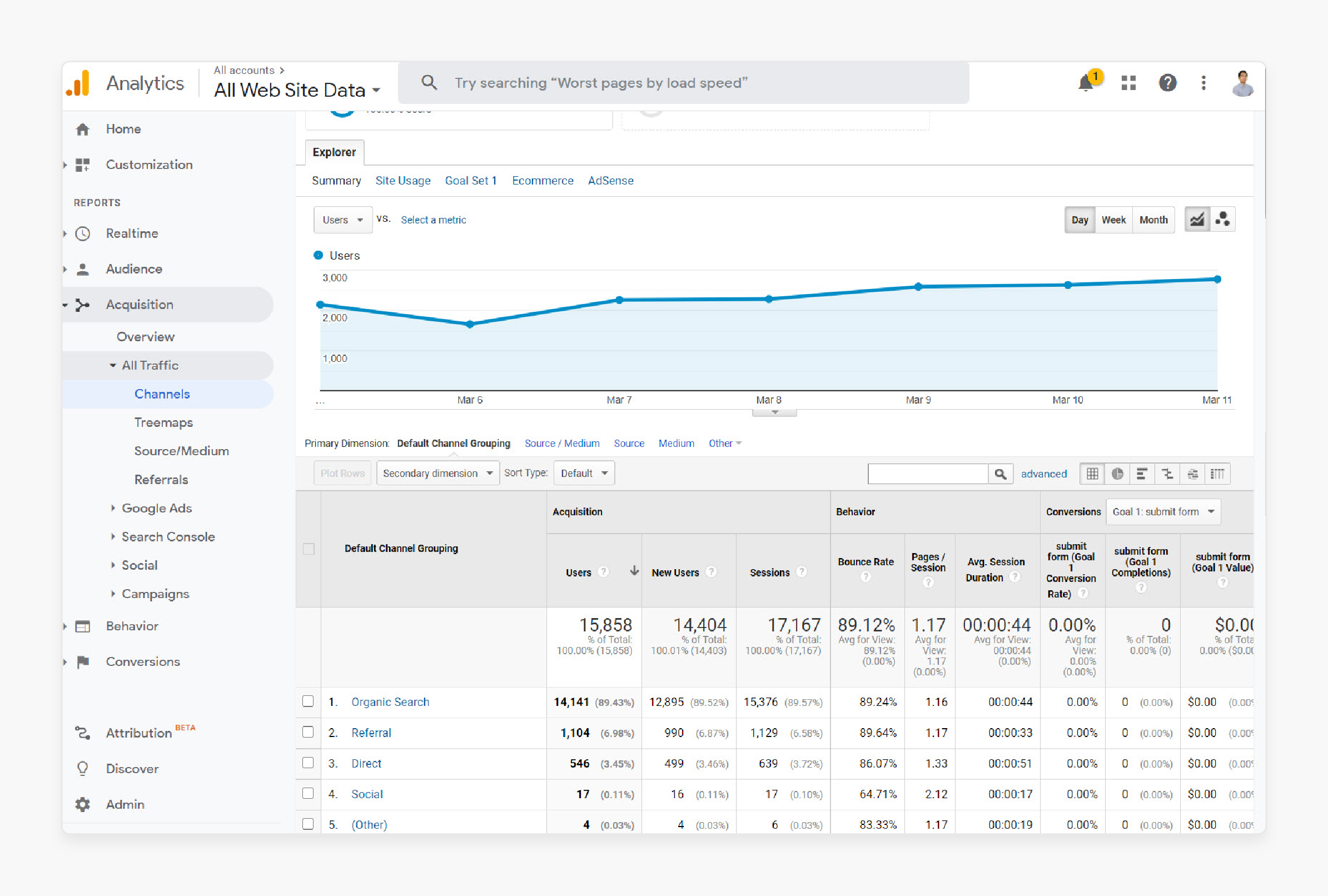
-
Modern analytics platforms continuously monitor customer behavior and market trends. These tools process vast amounts of data in real time. It provides immediate feedback on customer interactions. Every click, purchase, and cart abandonment generates valuable data points. This constant stream of information enables businesses to adjust their strategies instantly.
-
Real-time analytics excel at identifying emerging trends in customer behavior. These tools can detect subtle shifts in purchasing patterns as they occur. Businesses can spot new opportunities for increasing average order value immediately. This quick recognition of trends provides a significant competitive advantage.
-
The optimization supports dynamic pricing strategies with immediate market feedback. Businesses can adjust prices based on current demand and competition. These adjustments help maximize average order value while maintaining market competitiveness.
2. Exit Page Analysis
-
Magento analytics reveal common patterns in customer exit behavior. Some customers abandon carts during shipping cost calculation. Others leave when encountering unexpected fees. Price comparison behavior often triggers exits at product pages. These patterns help businesses understand and address specific customer concerns.
-
Understanding exit points enables the creation of specific recovery strategies. Businesses can develop targeted offers that address common exit triggers. These might include free shipping thresholds or limited-time discounts. The key lies in matching the solution to the specific reason for abandonment.
-
Data-driven recovery campaigns focus on bringing customers back to complete purchases. Email sequences remind customers of abandoned items. Personalized messaging addresses specific concerns that caused the exit.
3. Measurable Results
-
A/B testing has emerged as a powerful tool for optimizing ecommerce performance. These tests compare different versions of website elements. It is to identify the most effective configurations. The dramatic improvements demonstrate the value of continuous testing and optimization.
-
Banner placement optimization, guided by data analytics, has proven highly effective. This improvement comes from careful analysis of user interaction patterns. The positioning decisions rely on heat mapping and click-through data analysis.
-
Continuous monitoring shows sustained improvements over time. Businesses maintain higher AOV levels through ongoing optimization. The results indicate lasting benefits rather than temporary gains. This sustainability proves the long-term value of data-driven approaches.
FAQs
1. What is the Average Order Value (AOV) in ecommerce?
AOV, or Average Order Value, is a key metric. It measures the average dollar amount spent per order on your ecommerce store. It helps you gauge customer spending patterns.
2. How can free shipping thresholds increase AOV?
Setting a small order value for free shipping encourages customers to add more items. It effectively increases average order size without additional customer acquisition.
3. What are effective ways to increase order size?
Offering tiered pricing, bundle discounts, and cross-selling are ways to increase your AOV. It motivates customers to spend more on each transaction.
4. How can stores like Shopify Improve AOV?
These stores can improve average order value through strategies. These include upselling, rewards programs, and personalized recommendations. It builds up the shopping experience and increases transaction values.
5. Why is AOV important for ecommerce brands?
AOV is needed for ecommerce brands. It directly impacts revenue and profitability by focusing on maximizing value per transaction. It is instead of solely acquiring new customers.
Summary
To increase AOV ecommerce prices, owners need to highlight the product features that attract customers. In this article, we explain the strategies and their benefits for increasing AOV. Here is a quick recap:
- Define AOV and its importance in ecommerce.
- Use tiered pricing to increase order sizes.
- Use bundling for higher perceived customer value.
- Set free shipping thresholds to increase spend.
- Apply data-driven strategies for AOV optimization.
Choose managed Magento hosting options to accelerate performance and increase AOV.





